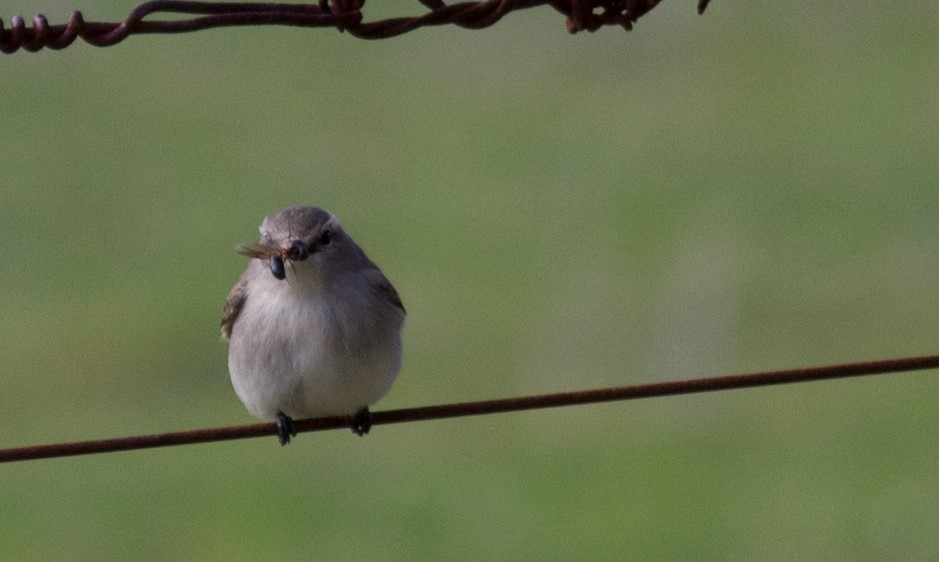Make your fencing wildlife friendly
Posted on 8 July, 2020 by Frances
Many of us have had the awful experience of finding a wild animal tangled in a fence. Here is an excellent article from our friends at Newham & District Landcare Group, who do outstanding landscape restoration work in the Macedon Ranges region of Victoria. This article was written by Penny Roberts for the Newham & District Landcare Group news.
Make your fencing wildlife friendly
In Australia, barbed wire is so ubiquitous that most people are hardly aware of its presence.
It forms the boundaries of countless properties, estimated at tens of millions of kilometres, and is the accepted way of keeping sheep and cattle within those boundaries. More than 60% of this fencing has barb wire as the top strand.
However, it is a major hazard to our wildlife, with thousands of native animals becoming entangled on its barbs each year. Nobody really knows the extent or how many, as many are removed by the landholder or eaten by foxes, cats and even birds of prey.
One of our members recently spotted this Sugar Glider caught on barbed wire on a fence. Fortunately, with four hands available, the Glider was safely released and inspection showed it had suffered minimal damage to its membrane.
More than 80% of recorded wildlife entanglement occurs on the top strand of barbed wire fences. We often see kangaroos hung up on wire and mesh fences, legs caught in a twist of wire – a reflection of their numbers in our landscape at present – but more than 70 wildlife species have been identified in Australia as occasional or regular victims of barbed wire fences.
Nocturnal animals are at greatest risk, failing to see fencing or cannot clear the height in windy conditions – Bats, Gliders and Owls most commonly. It may be that the fence is over a food tree or the gliding distance between trees is too great.
Fences close to wetlands may result in insufficient clearance for take-off and landing safely.
Any barb wire presents a risk, however higher risks exist where fences are:
- Newly constructed
- On ridgelines.
- Crossing or surrounding waterways and dams.
- Near feed trees.
- Higher than surrounding vegetation.
Wildlife-friendly fencing:
- Remove any old fencing that has fallen into disrepair.
- Consider whether a fence is really necessary.
Although most property owners would be reluctant to change all of their barbed wire fencing to plain wire, there are some steps they can take to minimise the harm to our animals where fences are necessary:
- Identify the wildlife hotspots: along ridge lines, near feed trees, in wildlife corridors or over
waterways. - Run a strand of white electric fence tape above the barbed wire. This flickers in the wind and is
more visible than the grey wire. - Replace the top strand of barbed wire with plain wire or cover it with split polypipe.
- Attach old CDs which swivel and reflect the light to make hotspot sections of fence more visible.
Many thanks to Newham and District Landcare Group for sharing this useful information. To learn more about their group and read their news in full – click here







I love your efforts in this regard and it got me thinking what I can do with my barbed fences (albeit I haven’t much of it).
However I am concerned about the electric fence tape. It is very very strong and as it would be looser than wire it may create another possible opportunity for a twist to form when the roo hits the top area of the fence?
Maybe paint the top strand? And maybe with some long-lasting paint that contains glitter?
thanks for the suggestions Bill, certainly worth considering some of these as options.
Use only bottom strand if you don’t really needfence. Keeps boundary from disappearing but fulfills requirements of establishing them
thanks Meg, this would be a safe option indeed.
Well barbed wire is not the only hazard,those fences that are traditionally put up by the C.M.A. and Connecting country are wildlife traps with more kangaroos than i can remember that i have had to put down because they have been hooked on the suicide wires at the top also released an echidna who was stuck on the useless plain wire on the bottom of the hinge lock. Bout time to rethink fencing design with just plain wire so wildlife can come and go.